17 Types of Basil to Grow in Your Herb Garden
Delicious Varieties for Cooking With Different Flavors
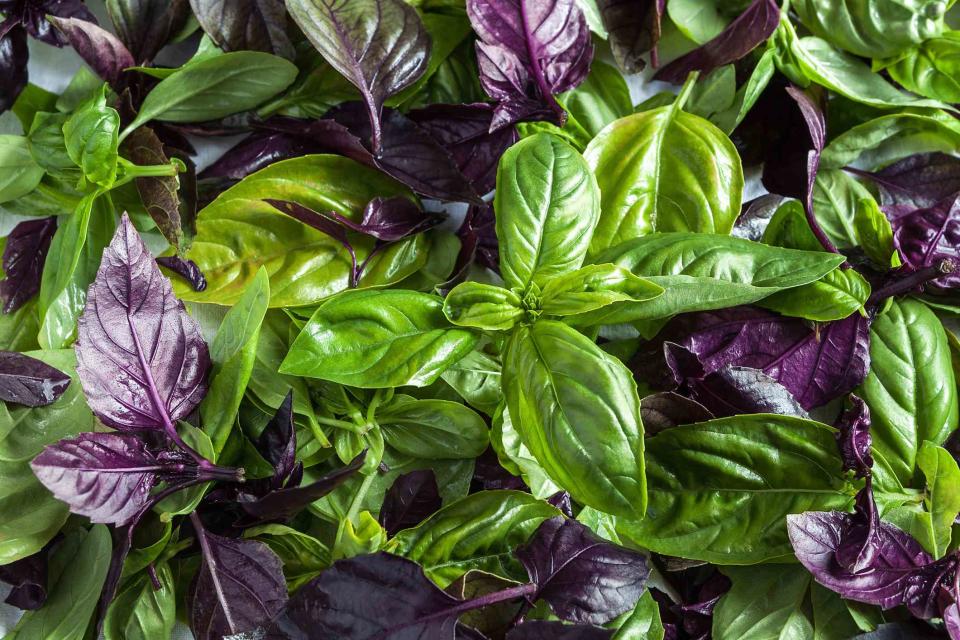
EvgeniySmolskiy / Getty Images
Reviewed by Kathleen Miller
Fresh basil is fragrant, spicy, and a traditional herb in summer cuisine. And while you may only know one of a few types of basils from what you can get at the grocery store, there are up to 150 basil varieties, most deriving from Ocimum basilicum (sweet basil). It can grow from 10 to 24 inches tall, depending on the variety.
This annual herb from the mint family likes plenty of sun, though it will tolerate a bit of shade, and does best in well-drained, rich, loamy soil. It's native to Asia and Africa and is perennial in warm zones USDA 9 to 11, but is primarily grown as an annual. It can be planted outdoors in spring after the last frost.
Text Link:How to Grow Basil
When flowers appear on your basil plants, gently pinch them off to allow the leaves to continue producing and reach full size. You can add the edible flowers to a salad.
Genovese Basil (Ocimum basilicum 'Genovese')
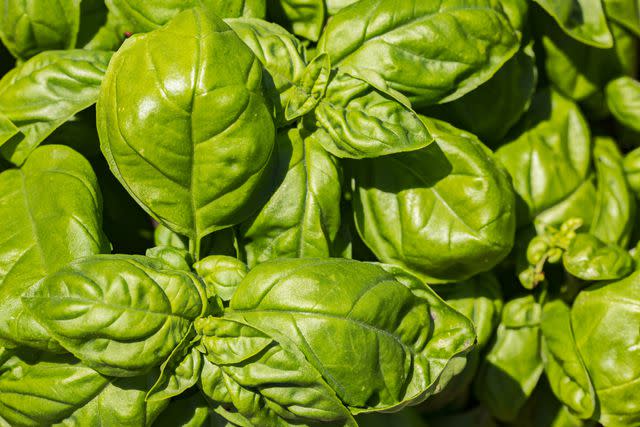
Claudio Camilli / EyeEm / Getty Images
Genovese or Italian basil is perhaps the most widely used and widely-grown basil for culinary purposes. Its large, shiny, rounded leaves are familiar to many cooks and gardeners, and it's considered the best herb for making pesto and serving raw in salads. It has a complex spicy flavor with aromatic notes of mint and clove. Easily grown from seed, Genovese basil does well in containers.
Native Area: Africa, Asia
USDA Zones: 9 to 11
Sun Exposure: Full sun to partial shade
Height: 12 to 24 inches
Sweet Basil (Ocimum basilicum)
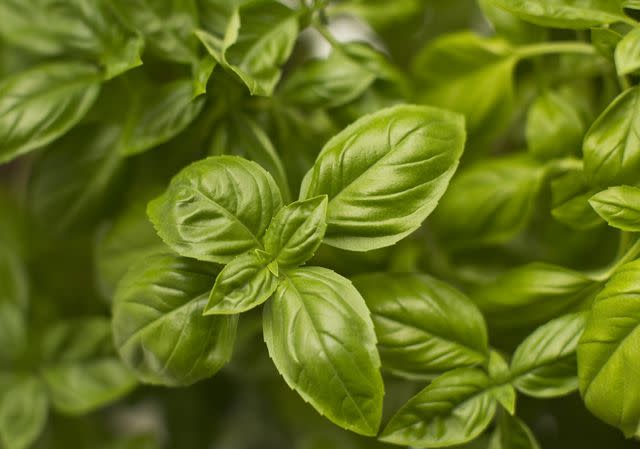
Dimitris Meletis / Getty Images
Sweet basil is very similar to Genovese basil, and the names are often used interchangeably, though they are, in fact, two different plants. The color of the leaves is often somewhat lighter than Genovese basil, and the shape of the leaves is less rounded and more pointed. Its flavor is slightly sweeter and milder than Genovese, and it is sometimes thought to have a slight hint of anise or licorice flavor.
Native Area: Central Asia, Southeast Africa
USDA Zones: 9 to 11
Sun Exposure: Full sun to partial shade
Height: 12 to 24 inches
Osmin Purple Basil (Ocimum basilicum 'Osmin purple')
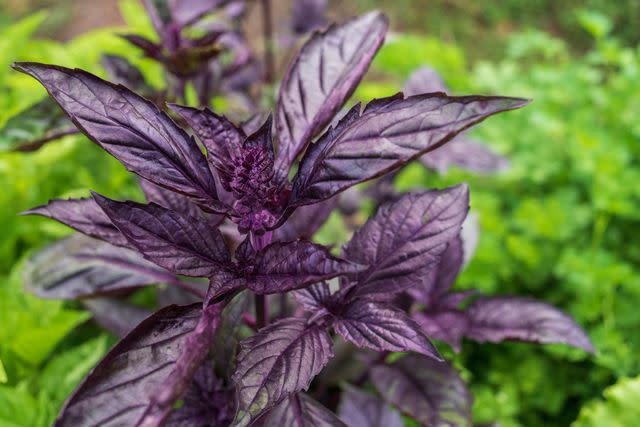
Natalia Garidueva / Getty Images
There are a number of purple basils. Osmin purple basil is one of the most common varieties and is a striking shade of deep purple with blue-black tones; most agree it is the darkest of the purple basils. With a spicy, clove-like flavor, it is best used fresh in salads or for garnish. The deep purple flowers can also be snipped and used in a salad.
Native Area: Africa, Asia
USDA Zones: 9 to 11
Sun Exposure: Full sun to partial shade
Height: 12 to 24 inches
Cinnamon Basil (Ocimum basilicum 'Cinnamon')
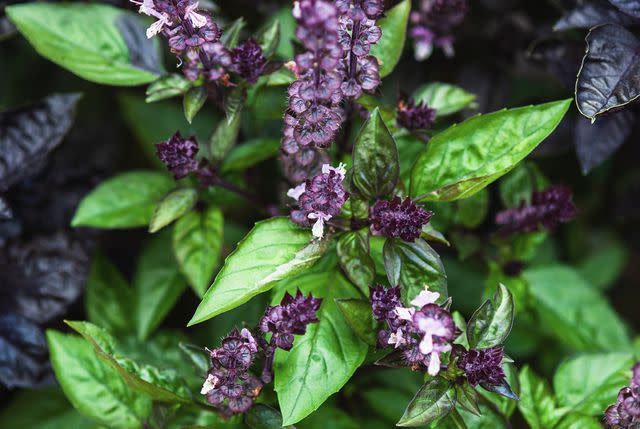
Nadya So / Getty Images
Cinnamon basil, also known as Mexican spice basil, has a mild spicy flavor with notes of cinnamon and is popular in Asian cuisine. Its bright green leaves have subtle purple veining, and the purple stems bear light purple or pink flowers. The fresh leaves are delicious in a summer fruit salad or garnish with a cheese and fruit plate.
Native Area: India, Asia
USDA Zones: 9 to 11
Sun Exposure: Full sun to partial shade
Height: 12 to 24 inches
Lemon Basil (Ocimum basilicum citriodorum)
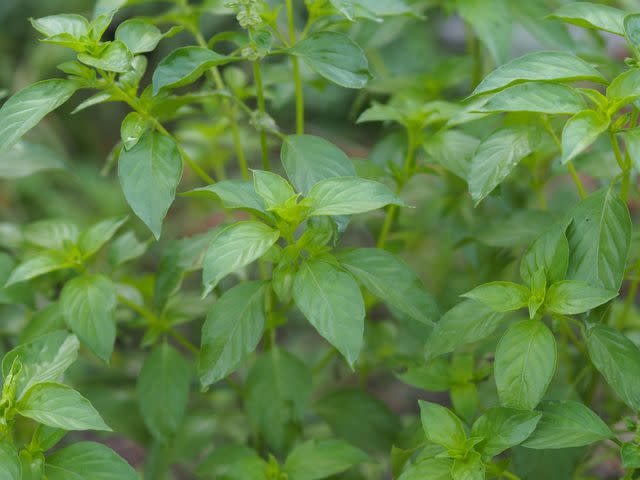
Penpak Ngamsathain / Getty Images
Lemon basil is also called Thai lemon basil (or amenglak) or hoary basil. It's a hybrid that is popularly used in South Asian cooking. The leaves are firmly textured and hold up well to high cooking temperatures. It has a delightful lemony fragrance and light lemon flavor to go with its spicy basil flavor.
Native Area: Africa, Asia
USDA Zones: 9 to 11
Sun Exposure: Full sun to partial shade
Height: 12 to 24 inches
Thai Sweet Basil (Ocimum basilicum var. thyrsiflora)

YinYang / Getty Images
Thai sweet basil is a popular herb in South Asian cooking, particularly in Thai cuisine. Its beautiful plants are also a show-stopper in the herb garden, with deep purple stems and flowers. The leaves are somewhat thicker in texture than sweet basil, and the flavor is mild and complex. Thai sweet basil's flavor holds up well in cooking at high temperatures.
Native Area: Africa, Asia
USDA Zones: 9 to 11
Sun Exposure: Full sun to partial shade
Height: 12 to 24 inches
Greek Basil (Ocimum basilicum var minimum 'Greek')
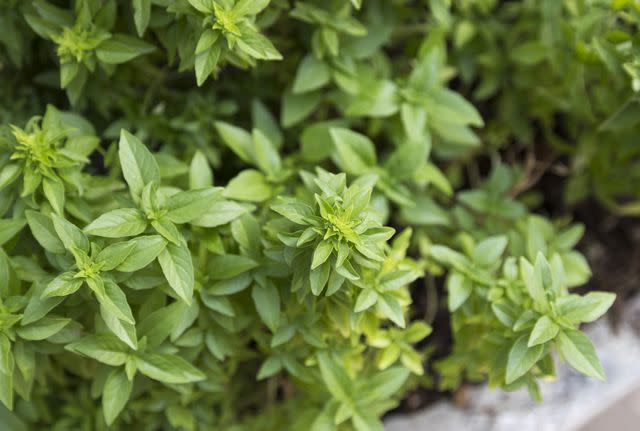
Adél Békefi / Getty Images
Greek basil is one of the smallest basil plants, usually no taller than eight inches. The compact plants produce light green, slightly pointed leaves that grow in small rounded clumps. It grows easily in containers and makes a nice addition to the herb garden or front of the border. The tiny leaves make it perfect for a decorative garnish or as part of a salad or other fresh summer dish.
Native Area: Africa, Asia
USDA Zones: 9 to 11
Sun Exposure: Full sun to partial shade
Height: 6 to 8 inches
Dark Opal Basil (Ocimum basilicum 'Dark Opal')
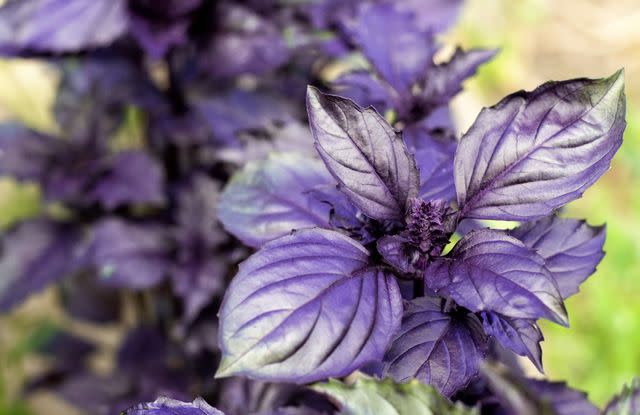
Ivan4es / Getty Images
Dark Opal basil is an aromatic, spicy basil that can be used like any other basil, but its stunning color makes it a very showy plant for your herb garden as a cut flower and, of course, at the dinner table in a salad. It is somewhat smaller than other basils, seldom growing more than 20 inches
Native Area: Africa, Asia
USDA Zones: 9 to 11
Sun Exposure: Full sun to partial shade
Height: 12 to 20 inches
Christmas Basil (Ocimum basilicum 'Christmas')
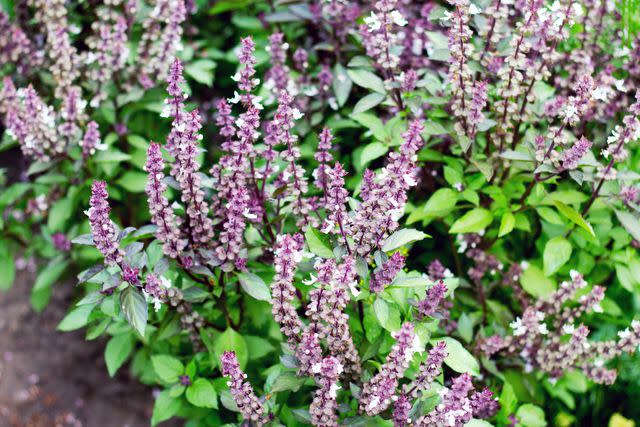
elena_hramowa / Getty Images
Christmas basil is a hybrid cross between Thai and Genovese basil. It has dark purple stems and lighter purple flowers similar to Thai basil, though the leaves are the bright shiny green of Genovese. It has an herby, complex scent that many find reminiscent of winter holiday smells, like pine needles and the fruity spice fragrance of mulled wine. Its savory flavor works great in cooking sauces, soups, and meat dishes.
Native Area: Africa, Asia
USDA Zones: 9 to 11
Sun Exposure: Full sun to partial shade
Height: 12 to 18 inches
Cardinal Basil (Ocimum basilicum 'Cardinal')
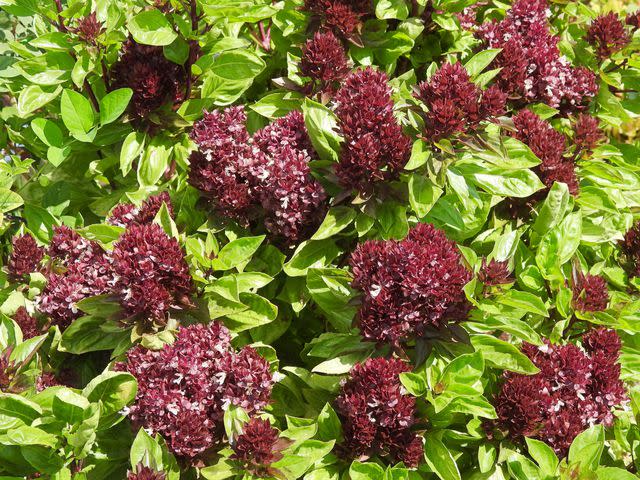
passion4nature / Getty Images
Cardinal basil is a cultivar that was developed in Israel. The showy flowers on these large plants are a dramatic addition to the outdoor herb garden. It is strongly scented and often used for flavoring oils and herb vinegar.
Native Area: Israel
USDA Zones: 9 to 11
Sun Exposure: Full sun to partial shade
Height: 24 to 30 inches
Globe Basil (Ocimum basilicum 'Pistou')
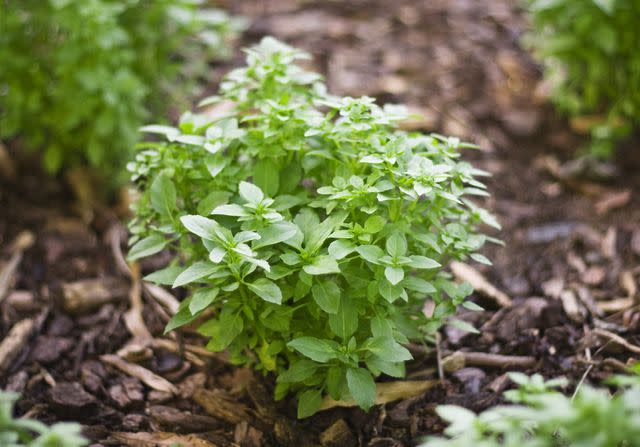
djgunner / Getty Images
This plant is also known as pistou basil, spicy bush basil, or boxwood basil. It is a dwarf sweet basil believed to descend from sweet basil varieties in India and Asia. The tiny leaves grow in small branching clumps, forming a small round globe shape. It is perfect for snipping for bits of garnish or to use raw in salads or other dishes.
Native Area: India, Asia
USDA Zones: 9 to 11
Sun Exposure: Full sun to partial shade
Height: 6 to 10 inches
Holy Basil (Ocimum tenuiflorum)
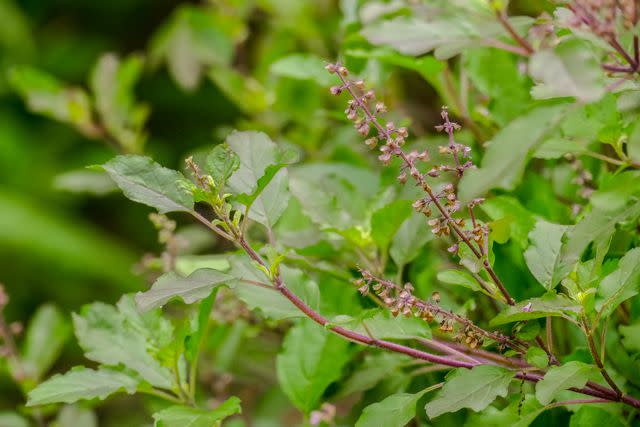
anand purohit / Getty Images
Also known as tulsi, holy basil (Ocimum tenuiflorum ) is similar to other basils but has different flavors and qualities. The pale purple stems and small purple flowers somewhat resemble Thai basil, but the leaves are wavy and slightly wrinkled. It is loved for its spicy taste in Indian cooking and is also revered as a medicinal herb in Indian traditional medicine. It is a common herbal tea available in most grocery or health food stores.
Native Area: India, Asia
USDA Zones: 9 to 11
Sun Exposure: Full sun to partial shade
Height: 12 to 24 inches
African Blue Basil (Ocimum kilimandscharicum × basilicum ‘Dark Opal’)
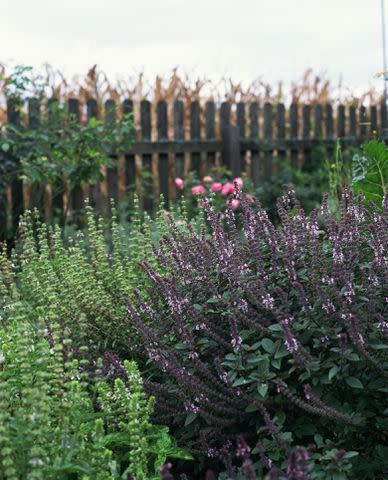
Evan Sklar / Getty Images
This colorful plant is said to be a hybrid of dark opal basil and camphor basil. It can be grown as a perennial in warm regions and reaches up to 4 feet tall. Its camphor basil origins give it a slight camphor fragrance, along with notes of clove and mint. Its taste is peppery, minty, and complex. The flowers of the African blue basil are a delicate pale blue or purple color and beautiful to pollinators, especially honeybees, so letting some of this go to flower is a good idea if you want to attract beneficial pollinators to your garden. It is flavorful for salads or hot dishes and a beautiful fragrant addition to cut flower arrangements.
Native Area: Africa, Asia
USDA Zones: 8 to 11
Sun Exposure: Full sun to partial shade
Height: 24 to 48 inches
French Basil (Ociumum basilicum 'Marseilles')
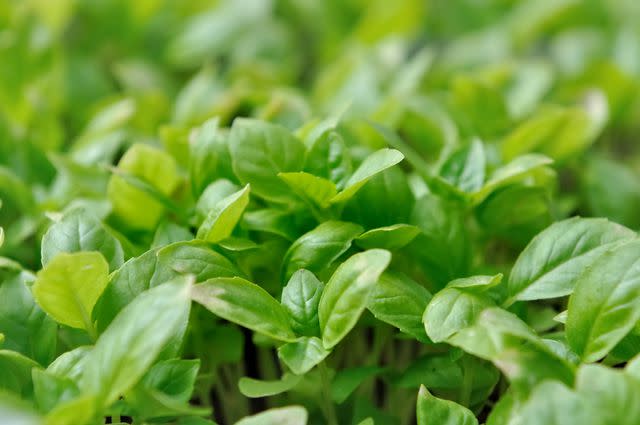
sanddebeautheil / Getty Images
French basil is also known as Marseilles basil. It is an heirloom globe basil, and its compact plant has slightly larger leaves than other globe basils. It has a robust and delicious fragrance. In French cuisine, it is used to make pistou, which is a sauce similar to Italian pesto.
Native Area: India, Asia
USDA Zones: 9 to 11
Sun Exposure: Full sun to partial shade
Height: 8 to 10 inches
Napoletano Basil (Ociumum basiclium 'Neopolitan')
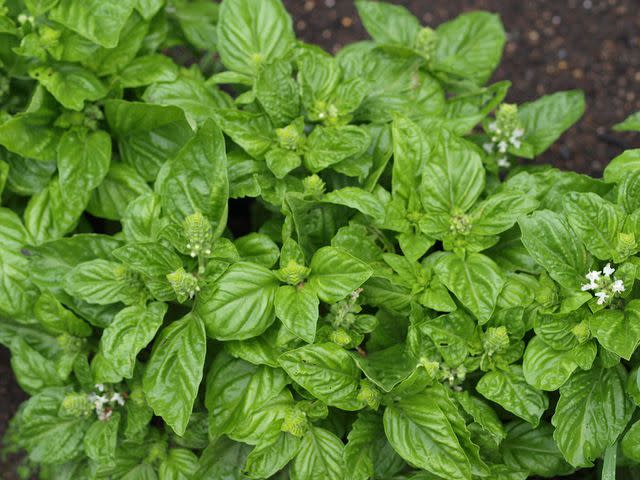
flickr / F.D. Richards / CC BY-SA 2.0
This basil is native to Naples, Italy, and is widely grown and used in Europe. It has large, ruffly, dark green leaves with a strong flavor and is considered one of the best basils for making Caprese salad. This variety is slow to bolt, giving it a slightly longer growing season than other basils. It is also sometimes known as large-leaf basil or lettuce-leaf basil; the plant remains relatively small despite having very large leaves.
Native Area: Italy
USDA Zones: 8 to 11
Sun Exposure: Full sun to partial shade
Height: 10 to 12 inches
Text Link:The 13 Best Places to Buy Seeds in 2023
Lime Basil (Ocimum americanum)
Closely related to lemon basil, lime basil herb has a zesty flavor and a sweet, citrusy aroma. Its leaves are a little smaller than Genovese basil and narrower, flat, and tapering to a point with jagged edges. It is grown the same way as other types of basil—it can grow outdoors in warm weather and indoors on a sunny windowsill. It's an easy plant to grow in containers.
Native Area: Africa, India, China, Southeast Asia
USDA Zones: 9 to 11
Sun Exposure: Full sun
Height: 15 to 36 inches
Green Ruffles Basil (Ocimum basilicum 'Green Ruffles')
You would have difficulty recognizing this as basil; it looks much more like curly lettuce but has serrated, ruffled edges. It has a lighter sweet basil taste with cinnamon, citrus, and licorice hints. Ted Torrey, an herb breeder from Burpee in the U.S., developed green ruffles basil. He also made purple ruffles basil from crossing green ruffles with dark opal basil.
Native Area: United States
USDA Zones: 10 to 11
Sun Exposure: Full sun
Height: 18 to 24 inches
Tips for Growing Basil
Basil loves the sun, but if you notice wilting during days of harsh sun, give shade or water more thoroughly. It likes regular water.
Basil germinates 7 to 10 days after planting and is usually ready for harvest within 3 to 4 weeks.
It can grow indoors or outdoors; it only needs six to eight hours of steady sunlight to grow well.
Prune monthly (1/3 of the leaves) to encourage bushier, healthier growth.
Avoid bolting or the plant producing flowers and seeds by reducing its exposure to intense heat; pinch off the flowering stems 1 inch below the bud to prevent them from tasting bitter.
Do not fertilize; too many nutrients can make the basil lose its signature taste.

